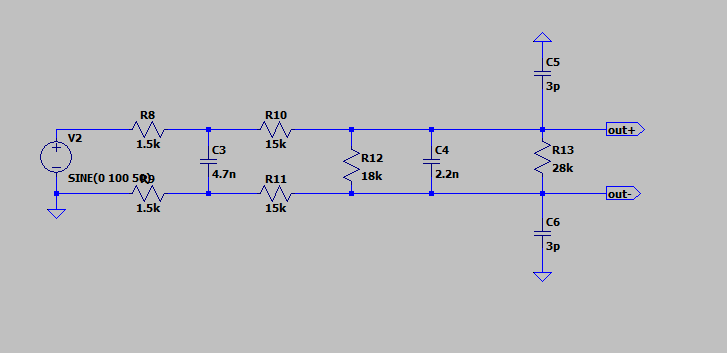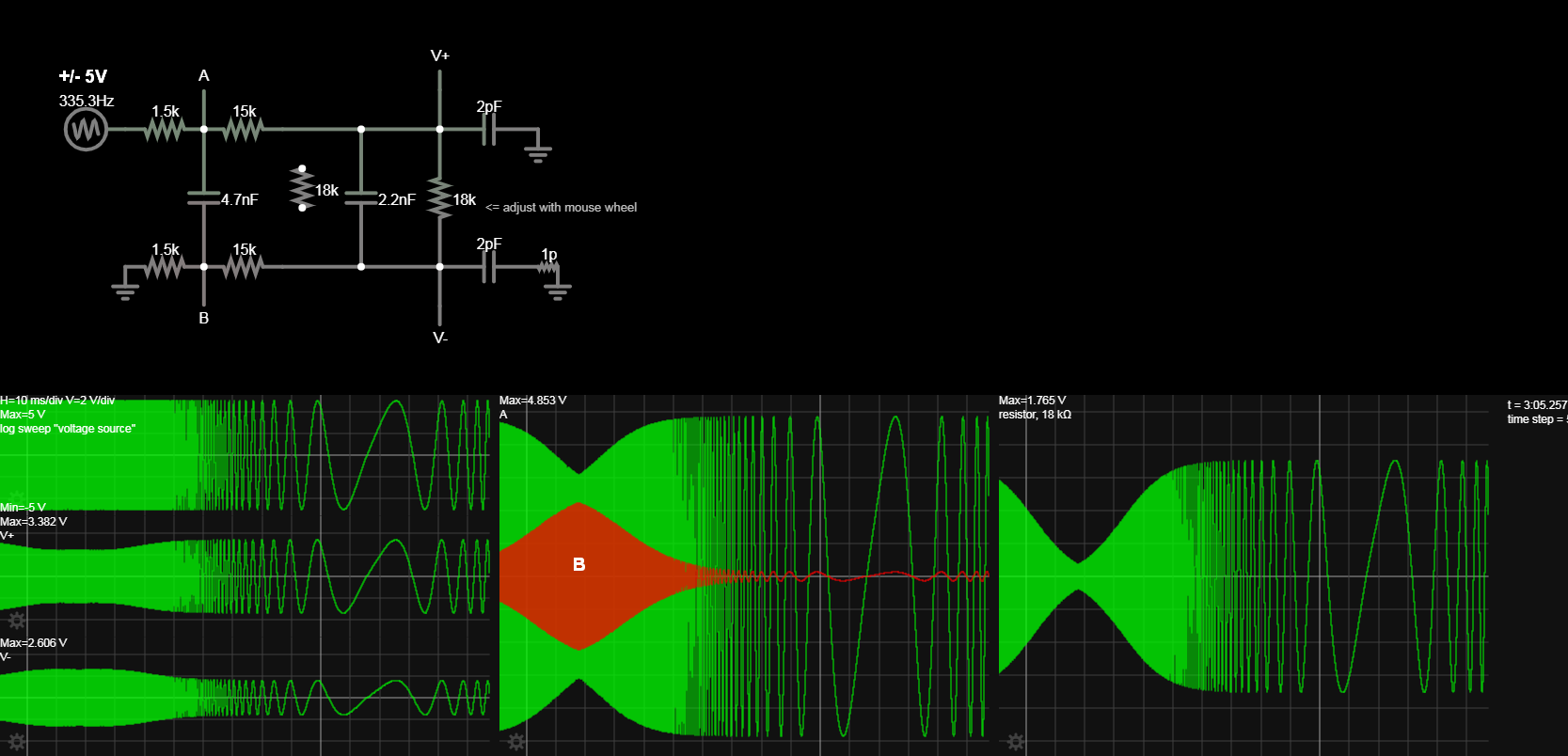I'm stuck trying to calculate the cut-off frequency and transfer function of the filter below.
I'm not sure how to handle the mirrored resistors on the bottom (R9, R11) or the extra resistors (R12, R13).
New to electronics so any advice would be helpful.
[Edit] I've tried remodelling the circuit like this to run through a 2 pole Rc filter calculator but not sure if it is correct
Thanks!






